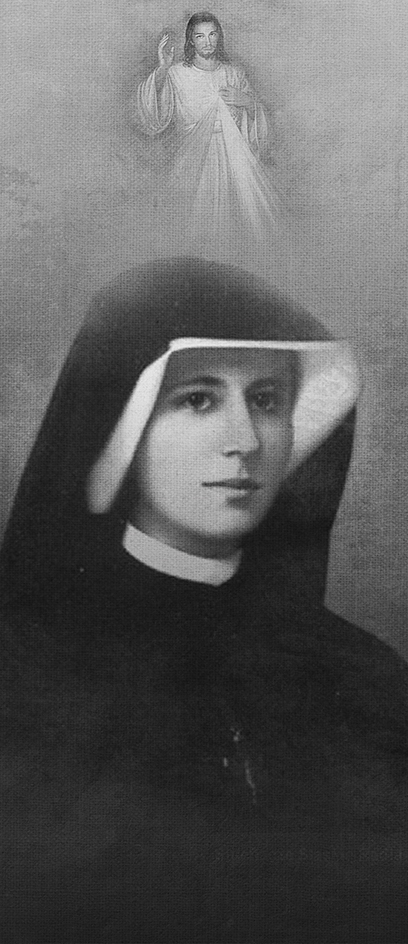
Saint Faustyna Kowalska
actually Helena Kowalska - a nun of the Sisters of Our Lady of Mercy, holy Catholic Church
(born on 08.25.1905 in Głogowiec, died on 10.05.1938 in Kraków)
Oh, how good it is to live obediently, to live in the awareness that everything I do is pleasing to God - the Diary of St. Faustina
From the early age, the life of Faustina Kowalska was not a bed of roses. The future saint - brought up in poverty, with nine siblings – finished her education after three years of elementary school and took a job as a maid in the homes of wealthy families.
Regular prayer and a sense of calling helped Faustina to survive hard times. A breakthrough in her spiritual life came in form of a revelation - a vision of the suffering Christ - which she experienced in 1925. Recognizing this as a sign, a still young, twenty-year girl decided to enter the Order.
Finding a suitable location turned out to be no easy task - no one wanted to accept the humble servant believing that she is not ready for the monastic life. Faustina was finally admitted to the Congregation of the Sisters of Our Lady of Mercy in Warsaw. Before that, however, she had to earn for her upkeep, working for a year in the kitchen of the house for the elderly and sick sisters.
During her thirteen years of monastic service, Sister Faustina Kowalska visited many cities in different parts of the country. She was experiencing new revelations as well. She decided to record her extraordinary experiences which culminated in her work, known as the Diary.
One of Faustina's most important revelations took place on 22 February 1931. The Son of God commissioned her to paint an image of the Divine Mercy (now known under the name of Jesus, I trust in You). The painting was created by a painter Eugene Kazimirowski, who was chosen by the nun. The main theme of the image was reproduced many times, and today it can be found in almost every Polish church.
With time, visions associated with the cult of Divine Mercy began to haunt Faustina more often. The nun became the advocate of the cult of mercy and the instructions passed by her as a result of the revelations led to establishing the Feast of Divine Mercy, celebrated annually on the first Sunday after Easter.
Sister Faustina died in 1938 at the age of just 33 years. She was buried at the convent cemetery in Krakow's Lagiewniki. The cause of death was chronic tuberculosis and recurrent problems with the digestive system.
Life of the nun was marked by mysticism, not only because of the many revelations, but also by healing attributed to her and other miracles, such as mind reading or gifts of prophecy and bi-location. Faustina reportedly also had the stigmata.
The process of beatification of Faustina Kowalska began after the war. This goal was achieved only in 1993. Seven years later it finished with the canonization of Blessed Faustina. Both ceremonies - beatification and canonization, were led by Pope John Paul II.
Do you know?
- Visions of Faustina are being questioned by scientists. Many of them see the nun's visitations as ordinary hallucinations, and even symptoms of mental illness, called cyclophrenia.
- St. Faustina Kowalska is a very important figure for the whole Catholic world. The service established by St. Faustina is associated with the cult of Divine Mercy, considered as a complement of the act of creation.
- On October 5, the day of St. Faustina's death, memorial masses dedicated to her are held in all the churches in Poland.
- The cult of Divine Mercy is very popular in Poland and abroad. Every year on the first Sunday after Easter about one million pilgrims from around the world arrive in Łagiewniki, the location of her tomb.






